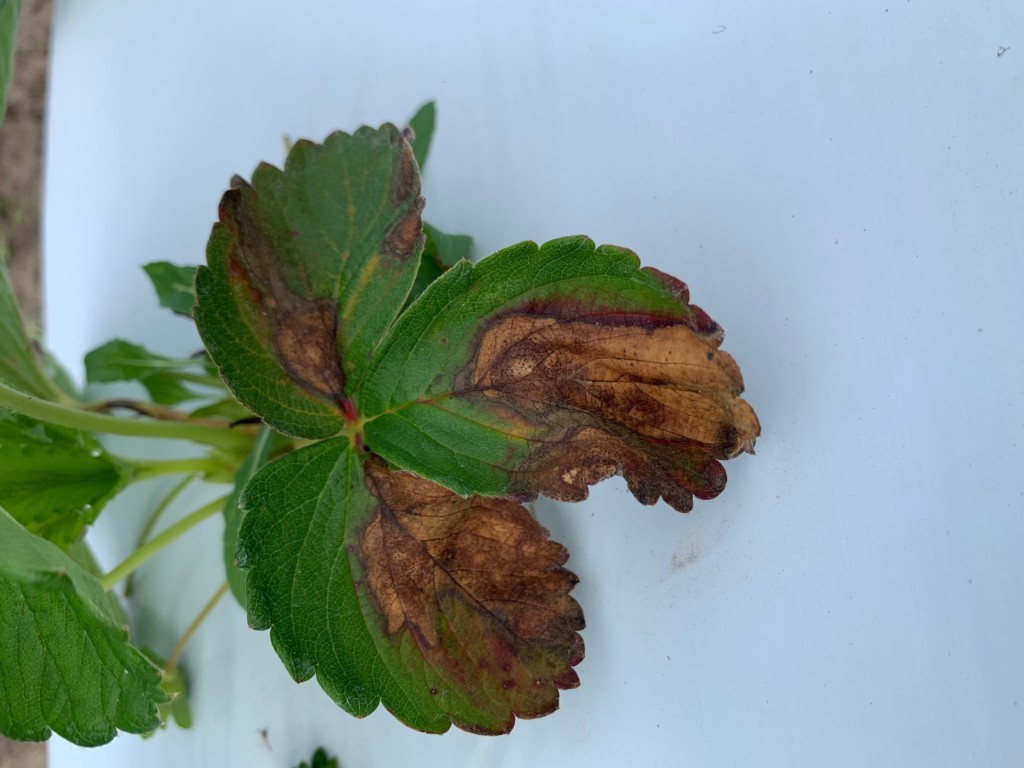
By Clint Thompson
It didn’t take long for Neopestalotiopsis Fruit Rot Neopestalotiopsis Fruit Rot to rear its ugly head in Georgia strawberries. According to the UGA Extension strawberry blog, a Georgia strawberry field is confirmed to have the disease. Symptoms and presumptive spores of the pathogen have been observed.
The infected plants were obtained from a nursery in Canada.
Plants that have shown symptoms have leaf spots and are dying; 20% to 30% so far. It is important for growers to scout their plantings for any symptoms. Contact your local Extension agent if you have questions or need assistance in identifying the disease.
A field in South Carolina has also reported disease symptoms with those plants originating from a nursery in North Carolina.
It is almost impossible to prevent the disease once the plants are in the ground. The pathogen can move to weeds and surrounding vegetation. Thiram and Switch are the only fungicides that have activity to date. Early incorporation of these fungicides is encouraged if the disease is observed.
Neopestalotiopsis causes leaf spots on strawberry plants. It develops quickly and produces spores on the leaves. It can cause severe leaf spotting and fruit rot under favorable weather conditions. The disease was first discovered during the 2018-19 season in five farms. It was attributed to one nursery source in North Carolina.
More than 20 farms experienced the disease during the 2019-20 season. It was attributed to two nursery sources early in the season in North Carolina and Canada.









